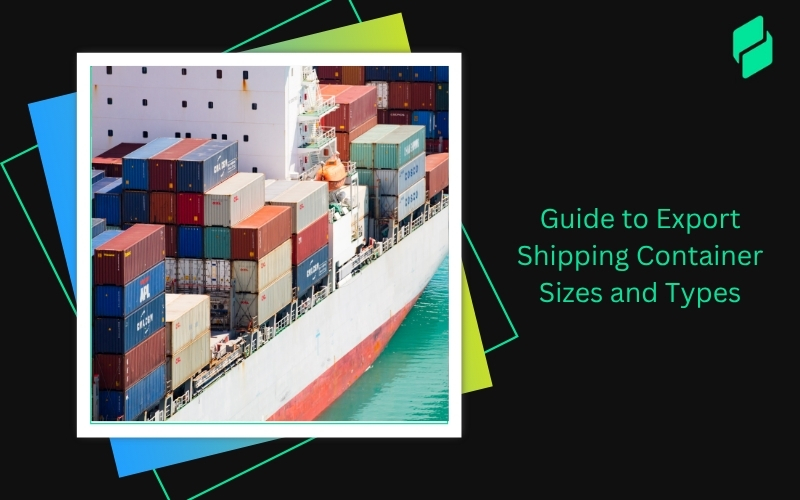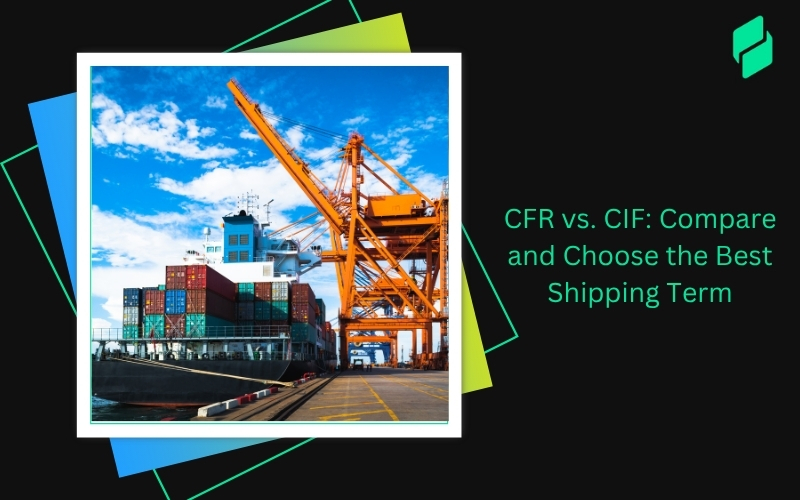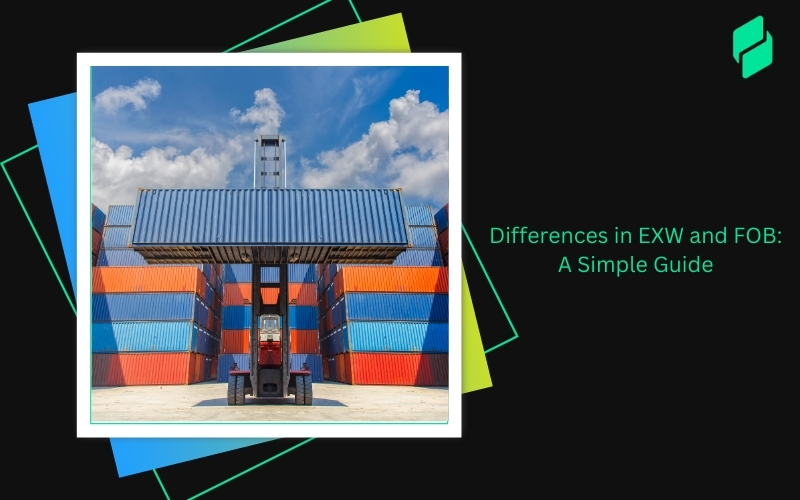Optimize your business: use unlimited savings with Pazago fulfilled now!
Get Started ->The maritime industry plays a critical role in the global economy. Bulk carriers transport essential commodities such as grains, minerals, and petroleum products across the world's oceans.
Ensuring the safe and efficient handling of these bulk materials is paramount, and inspecting bulk cargo is vital.
This guide delves into the intricacies of bulk cargo inspections and outlines essential safety protocols that safeguard the integrity of the cargo and the safety of the crew and vessel.
By adhering to these protocols, stakeholders can mitigate risks, enhance operational efficiency, and uphold industry standards, fostering a safer maritime environment.
Join us as we explore the essential steps in inspecting bulk cargo and the safety measures accompanying them.
First Things First: Why Bulk Carrier Inspection is Crucial for Safety and Efficiency
Bulk carrier inspection is essential in ensuring the cargo's safety and maintaining the ship's structural integrity. Inspections are not just a regulatory obligation but a vital process that directly impacts the smooth functioning of maritime operations.
Let's dive deeper into why these inspections are so crucial:
Ensuring Cargo Safety
The primary purpose of bulk carrier inspections is to safeguard the cargo during transportation. Proper inspection prevents:
- Contamination
- Spoilage
- Damage
Whether it's dry bulk like grains, coal, or ore or liquid bulk like oil or chemicals, inspections help maintain the quality of goods, which is critical for businesses and end consumers.
Maintaining Ship Integrity
During their voyages, bulk carriers are exposed to various environmental stresses, from rough seas to variable weather conditions. Inspections are conducted to assess the condition of the ship's:
- Hull
- Deck
- Cargo holds
Regular checks for corrosion, cracks, and structural weaknesses ensure the ship remains seaworthy, reducing the risk of structural failure, which could lead to accidents or vessel loss.
Avoiding Potential Hazards
Without thorough inspections, bulk carriers are susceptible to numerous hazards, including:
- Cargo shifting
- Leaks
- Fire risks
Inspections identify and mitigate these risks early, ensuring the safety of the crew, ship, and environment. Moreover, cargo inspections can detect dangerous goods or improper loading, reducing the chances of accidents.
Preventing Fines and Compliance Penalties
Regulatory bodies such as the International Maritime Organization (IMO) impose strict standards on shipping practices, including cargo handling and ship maintenance. Failure to comply with these standards can result in:
- Hefty fines
- Operational delays
Regular inspections help ensure the bulk carrier and its cargo meet these international regulations, thus avoiding financial losses and reputational damage.
Minimising Shipping Delays
An overlooked or poorly executed inspection can lead to shipping delays, especially if authorities at the receiving port discover non-compliance or safety issues. Inspections are preventive measures to ensure the ship can pass checks swiftly and efficiently, avoiding costly downtime. This is particularly important for industries that rely on timely delivery of bulk goods.
Also read: Shipping Heavy Freight: A Look at Services and Procedures
Essential Checklist for Bulk Cargo Inspections: Ensuring Safety and Compliance
A thorough inspection of bulk cargo holds is vital for maintaining safety standards and ensuring the vessel is ready for loading. Below is a comprehensive checklist that outlines critical inspection points to consider:
- Holds Swept and Cleared
- Ensure that cargo holds are swept clean to remove residue, loose rust, scale, and paint flakes. This step is crucial as leftover materials can contaminate new cargo and affect its quality. Proper cleaning also helps identify any hidden issues that could compromise the integrity of the hold.
- Structural Integrity of the Hold
- Conduct a thorough examination of the hold’s structure, including the walls, floors, and bulkheads. Look for signs of wear, corrosion, or damage that may compromise the hold's strength. Any detected structural issues should be addressed before loading to prevent potential failures during transport.
- Bilge Wells and Holds Maintenance
- Check that bilge wells and holds are dry and free from debris. Water accumulation can lead to corrosion, mould growth, and stability issues. Regular checks should include pumping out standing water and ensuring proper drainage to maintain a dry environment.
- Signs of Contamination and Infestation
- Inspect for any signs of contamination, such as spills or residues from previous cargoes, and check for pest infestations, including insects or rodents. Contaminated cargo can lead to significant financial losses, regulatory issues, and damage to reputation.
- Ventilation and Lighting Systems
- Test and inspect the ventilation and lighting systems within the cargo hold. Proper ventilation is essential to prevent the buildup of harmful gases, while adequate lighting ensures that inspections can be conducted effectively. Both systems must be functioning correctly to maintain a safe working environment.
- Hatch Cover Seals and Coatings
- Verify the integrity of hatch cover seals and coatings to ensure they are intact and functioning properly. Effective seals prevent water ingress and contamination from external elements. Any damage or wear should be repaired immediately to maintain the hold's integrity.
Also read: Cargo Inspection and Unloading Procedures
Detailed Structural and System Inspections for Bulk Carriers
Ensuring the safety and integrity of bulk carriers requires thorough structural and system checks. These inspections are crucial for identifying potential hazards and maintaining operational efficiency.
Here are key areas to focus on during inspections:
1. Inspection of Hatch Covers and Trackways
Begin by examining the condition of hatch covers, ensuring they are watertight and damage-free. Check the trackways for any signs of corrosion, debris, or misalignment that could impede proper closure. A well-maintained hatch cover is essential for preventing water ingress and protecting the cargo during transit.
2. Safety Checks for Hold Ladders, Platforms, and Handrails
Safety is paramount aboard bulk carriers, including the integrity of hold ladders, platforms, and handrails. Inspect these structures for stability and secure attachment to prevent accidents during loading and unloading operations.
Ensure that handrails are of adequate height and strength and that ladders are not damaged or slippery, providing safe access to various compartments.
3. Examination of Hold Bulkheads and Hopper Side Coatings
Inspect the hold bulkheads and hopper sides for any signs of coating damage or wear. Effective coatings are crucial for preventing corrosion and maintaining the vessel's structural integrity. Any deterioration can lead to leaks or structural weakness, so addressing these issues promptly is essential.
4. Verification of Tank Top and Access Lid Conditions
Assess the condition of tank tops and access lids, checking for signs of wear or corrosion. Proper sealing and functionality are vital for safely storing cargo and preventing leaks. Regular checks can help identify potential issues before they escalate into significant problems.
5. Evaluation of Bilge Systems
A thorough evaluation of bilge systems is essential for maintaining vessel safety. Inspect strum boxes for blockages and ensure non-return valves function correctly to prevent backflow. A well-maintained bilge system is critical for managing water ingress and ensuring the vessel remains stable during operations.
Also read: Understanding Ocean Transport: Maritime and Bulk Freight Shipping
Inspection of Fire Fighting and Safety Equipment
Ensuring that firefighting and safety equipment is in optimal condition is crucial for bulk carriers' and crew safety. Regular inspections help comply with maritime regulations and play a significant role in emergency preparedness. Here are the key areas to focus on:
- Inspection of Fire Fighting and Safety Equipment
Ensuring that firefighting and safety equipment is in optimal condition is crucial for bulk carriers' and crew safety. Regular inspections help comply with maritime regulations and play a significant role in emergency preparedness.
- Fixed Hold Fire Extinguishing Systems
When inspecting fire fighting equipment, thoroughly check the hold areas' fixed fire extinguishing systems, such as CO2 lines. Ensure that:
- CO2 cylinders are fully charged
- Pressure gauges are functioning
- Lines are free of leaks
Regular maintenance and testing of these systems are essential to ensure they operate effectively during a fire, providing rapid suppression to protect crew and cargo.
- Personal Protective Equipment (PPE)
During inspections, all crew members must wear the appropriate personal protective equipment (PPE), including:
- Fire-resistant clothing
- Helmets
- Gloves
- Eye protection
Proper PPE minimises the risk of injury during emergencies and ensures that crew members are adequately protected while inspecting and maintaining fire safety equipment.
- Training and Safety Awareness
Continuous training and safety awareness are essential components of effective fire safety management. Crew members should receive regular training on the following:
- Using firefighting equipment
- Emergency evacuation procedures
- Safety protocols
Conducting drills simulating fire scenarios helps reinforce these practices and ensures that crew members are familiar with their roles in an emergency.
Essential Hold Cleaning Procedures for Bulk Carriers
Proper hold cleaning is vital for maintaining cargo quality, preventing contamination, and ensuring the vessel's safety. Effective cleaning procedures help prepare the hold for the next shipment while meeting safety and environmental standards.
- Removing Residue from Previous Cargoes
Start by removing all residues from the previous cargo. Even small amounts of leftover materials can contaminate the new cargo and damage the vessel's structure over time. To ensure thorough removal:
- Use appropriate tools and methods to clear all debris
- Thoroughly rinse the hold afterwards
- Ensure no trace of the previous shipment remains to prevent cross-contamination, especially when dealing with sensitive cargo types.
- Inspecting and Repairing Ventilation Systems and Hatches
Once the hold is cleared of residue, inspect ventilation systems and hatches for damage or malfunction. Ensure that:
- Ventilation systems are functioning properly to prevent moisture buildup and harmful gases
- Hatches are sealed correctly to maintain a dry and secure environment for the next cargo
- Using High-Pressure Washing for Stubborn Stains
Employ high-pressure washing techniques to remove stubborn stains or residues that are not easily removed through basic cleaning methods. This method effectively eliminates:
- Oil stains
- Grain dust
- Other tough contaminants
- Pay special attention to corners, hard-to-reach areas, and hopper sides where residues may accumulate over time.
- Safe Chemical Use and Handling
Always consult the safety data sheets (SDS) before application if chemical cleaning agents are required. Ensure that:
- Chemicals are suitable for the type of residue and will not damage coatings or materials inside the hold
- Crew members are provided with appropriate PPE and follow safety protocols to avoid harmful exposure
- Proper handling and disposal of chemicals are in line with environmental regulations to prevent pollution
Also read: Understanding Ocean Shipping and Transport Services
Water Ingress Prevention Measures on Bulk Carriers
Preventing water ingress is critical for maintaining the structural integrity of bulk carriers and ensuring the safe transport of cargo.
Uncontrolled water entry can compromise cargo safety, cause damage to the vessel, and even lead to dangerous situations at sea. Implementing the following water ingress prevention measures is essential for safeguarding both vessel and crew:
Verification of Watertight Integrity for Hatch Covers and Access Lids
Regularly inspect and test the watertight integrity of hatch covers and access lids. Ensure that all gaskets, seals, and securing mechanisms are in excellent condition to prevent water ingress during rough weather or while the vessel is at sea.
Address any signs of wear, damage, or improper closure immediately to avoid potential leaks that could compromise the cargo hold.
Inspection of Non-Return Valves in Bilge and Ballast Systems
Non-return valves prevent water backflow into the bilge and ballast systems. Conduct frequent inspections to ensure these valves are operating effectively, as any malfunction can result in water ingress into vital areas of the vessel.
This is particularly important when transitioning between cargo operations or ballast water exchanges, where water management is crucial.
Regular Testing of High-Level Alarms
High-level alarms in the cargo hold, bilges, and ballast tanks are essential for the early detection of water ingress. These alarms must be tested regularly to confirm their functionality. A reliable alarm system ensures that any potential water ingress is detected and addressed swiftly, minimising the risk of flooding or damage to cargo.
Blanking Off Bilge and Ballast Lines During Washing-Down Operations
During hold cleaning or washing-down operations, consider blanking off the bilge and ballast lines to prevent accidental water entry into the bilge system.
This extra precaution ensures that cleaning water does not mix with bilge water or compromise the system's function. It also prevents contamination, ensuring the bilge and ballast systems remain clean and free of unnecessary water.
Also read: Challenges Of Out of Gauge Cargo Shipping
Crew Preparedness and Requirements for Bulk Carrier Operations
A well-prepared crew is crucial for safely and efficiently handling bulk cargo operations, from cleaning processes to safety protocols.
Ensuring the crew is knowledgeable and equipped with the right tools can significantly reduce risks and improve overall vessel performance. Here are key aspects of crew preparedness and requirements:
Knowledge of Different Cargo Cleaning Processes
Crew members must be trained and knowledgeable about various cargo cleaning processes. Each type of cargo may require a specific cleaning method, such as dry sweeping, high-pressure washing, or chemical treatments.
Understanding these processes ensures the hold is appropriately cleaned, preventing contamination or damage to subsequent cargo. Regular refresher courses or onboard instructions can help the crew stay updated on best practices.
Access to Quality Cleaning Products and Equipment
The crew should have access to high-quality cleaning products and equipment appropriate for the cargo residues being handled. This includes eco-friendly detergents, high-pressure wash guns, and protective gear to ensure effective and safe cleaning.
Proper storage and maintenance of these tools are equally important to avoid breakdowns or shortages during crucial operations.
Training on the Use of High-Pressure Wash Guns and Safety Measures
High-pressure washing is often necessary to remove tough residues from cargo holds. Crew members must be properly trained to operate high-pressure wash guns safely, as improper use can lead to injuries or damage to the vessel.
Safety measures such as wearing appropriate PPE, maintaining a safe distance, and controlling water pressure should be reinforced through regular training and hands-on demonstrations.
Implementation of an Authorised Work Permit System and Risk Assessments
An authorised work permit system is essential for managing cleaning and maintenance tasks on bulk carriers. This system ensures that only trained and authorised personnel perform specific tasks, minimising the risk of accidents.
Additionally, conducting thorough risk assessments before starting any cleaning or maintenance work helps identify potential hazards and implement the necessary precautions. This can include assessing the work environment, checking the condition of tools, and ensuring that safety equipment is available and in use.
Also read: Benefits of Load Tracking Software for Freight Brokers and Shipments
Why Choose Pazago for Your Bulk Cargo Needs
With a global presence in over 110 countries, Pazago is revolutionising the import-export industry.

By leveraging Pazago’s fully managed platform, businesses can cut costs by up to 20% and reduce turnaround times by 50%, ensuring smoother and faster global expansion.
- Seamless Communication: Centralise and streamline all trade communications with Pazago’s dedicated Inbox, bringing all parties into one conversation.
- Efficient Documentation: Easily create, manage, and collaborate on critical trade documents like invoices, certificates of origin, and shipping manifests.
- Real-Time Cargo Tracking: Monitor shipments from 180+ shipping companies with real-time updates, reducing risks and bottlenecks.
- Inventory Planning: Stay informed with immediate delay alerts to manage inventory effectively and avoid costly disruptions.
- Cross-Border Payments: Receive international payments within 3 hours without limits or hidden fees.
- Quality inspection: Pazago offers comprehensive quality control services, including raw material inspections, inventory audits, pre-shipment checks, and container loading inspections. For more details, visit Pazago Quality Control.
Partner with Pazago today to ensure the safe and efficient transportation of your bulk cargo. You'll also enjoy cost savings and operational clarity.


.png)








